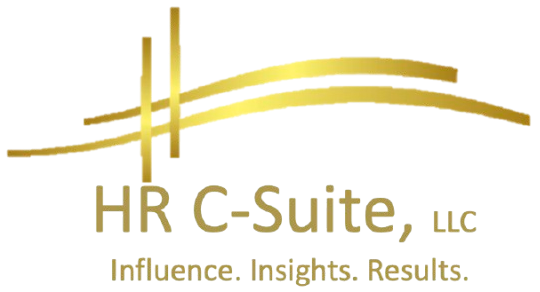For years, Human Resources has often been measured by activity: the number of hires made, policies updated, trainings delivered, or meetings held. HR departments were judged by output, not outcome, by volume, not value. But the modern workplace demands something different. In today’s volatile, high-pressure environment, HR’s real power comes not from what you do, but from the impact you create.
This shift—focusing on impact, not activity—isn’t just a trend; it’s a strategic necessity. Organizations that measure HR by activity alone risk being busy without being effective. Those who embrace impact-oriented HR create stronger cultures, higher retention, better engagement, and tangible organizational results.
Here’s how HR leaders can make the transition from being activity-driven to impact-focused.
Understand the Difference Between Activity and Impact
At first glance, activity and impact might seem interchangeable, but the distinction is critical.
- Activity: The volume of HR tasks performed. Examples include onboarding 20 employees, running five training sessions, or sending out benefits updates. Activity is often easy to quantify but doesn’t automatically translate into meaningful organizational outcomes.
- Impact: The measurable effect of HR actions on the organization’s performance, culture, or employee experience. Examples include reducing turnover among top performers, improving engagement scores by 15%, or streamlining hiring processes to increase time-to-productivity.
The power shift occurs when HR leaders start asking: “Is what I’m doing creating real organizational value, or just keeping myself busy?”
Why Impact-Oriented HR Matters Now More Than Ever
Several factors make this shift urgent:
- Economic uncertainty: Organizations must allocate resources wisely. HR initiatives that don’t deliver measurable impact are hard to justify.
- Talent scarcity: Attracting and retaining top talent requires HR to focus on strategies that tangibly improve employee experience and engagement.
- Leadership accountability: Executives expect HR to connect people initiatives to business outcomes, not just process compliance.
- Technology overload: HR teams can automate routine tasks, freeing time to focus on initiatives that create real value, rather than getting lost in busywork.
In short, HR can no longer operate as a transactional function. Impact-driven HR becomes a strategic lever, directly influencing the organization’s bottom line and culture.
Measure What Matters: KPIs That Reflect True Impact
Shifting from activity to impact requires a rethinking of metrics. Instead of tracking only how many trainings were conducted, focus on outcomes:
- Engagement: Measure changes in employee engagement scores after interventions.
- Retention: Track turnover rates for high-potential or critical roles following targeted retention strategies.
- Time-to-productivity: Evaluate whether new hires reach full performance faster due to effective onboarding programs.
- Performance outcomes: Assess whether HR initiatives contribute to increased productivity, innovation, or business results.
- Cultural alignment: Use surveys, focus groups, or behavioral assessments to understand whether HR initiatives are shaping the desired culture.
By tying HR metrics to organizational outcomes, HR moves from being seen as a support function to a strategic partner.
Shift From Task Management to Strategic Influence
Impact-driven HR requires leaders to operate at a higher level than day-to-day task management. This means:
a. Focus on Leverage Points
Instead of spreading effort across every HR task equally, identify areas where HR actions can have the greatest multiplier effect:
- Streamlining hiring for critical roles rather than all roles equally.
- Developing leaders to reduce engagement risks across teams.
- Addressing systemic performance issues rather than individual complaints.
b. Influence Organizational Strategy
HR leaders should participate in strategic discussions, not just implement decisions. By influencing decisions related to workforce planning, talent strategy, and culture, HR ensures that people initiatives have real business impact.
c. Prioritize Interventions That Move the Needle
Every HR program should answer: “How does this improve outcomes, engagement, or productivity?” If an initiative doesn’t measurably contribute to results, it should be re-evaluated, redesigned, or even discontinued.
Examples of Impact-Oriented HR in Action
Example 1: Transforming Onboarding
An organization was measuring onboarding activity by the number of orientation sessions completed. By shifting focus to impact, HR began tracking time-to-productivity for new hires. They redesigned the program, adding role-specific training and mentorship, resulting in a 25% faster ramp-up for critical roles. The activity hadn’t changed much—but the impact on organizational performance was profound.
Example 2: Targeted Retention Efforts
Instead of sending generic engagement surveys, HR analyzed turnover data to identify high-potential employees at risk. They implemented personalized retention plans, mentoring, and career development opportunities. Turnover in key roles dropped significantly, demonstrating clear impact from targeted, data-driven interventions.
Example 3: Streamlined Performance Management
The HR team replaced an annual review process with ongoing coaching, clear goal alignment, and feedback loops. Engagement scores rose, and performance issues were addressed proactively, showing measurable results rather than simply completing forms or meetings.
Build a Culture of Impact in HR
HR leaders can foster an impact-oriented mindset throughout the team by embedding these practices:
- Regularly review outcomes, not just tasks: Celebrate improvements in engagement, retention, and performance—not the number of forms processed.
- Encourage data-driven decision-making: Use analytics to show which initiatives are working and which need refinement.
- Create clear accountability: Assign ownership for results, not just activities. Team members should know their contribution is measured by impact, not output.
- Promote reflection and learning: After major initiatives, review what worked, what didn’t, and how to increase impact in the future.
This cultural shift ensures that HR teams internalize the principle that what truly matters is the difference they make, not just the work they complete.
Technology as a Tool for Impact, Not Activity
Modern HR technology can free teams from transactional work—but only if used with impact in mind. Examples include:
- Automated onboarding and payroll: Frees HR to focus on engagement, development, and retention.
- Data dashboards: Provide real-time insight into workforce trends, allowing HR to intervene strategically.
- AI-driven analytics: Identify high-risk attrition groups, skill gaps, or engagement drivers, enabling proactive initiatives.
The key is intentionality: technology should reduce activity without diminishing impact, creating space for HR to operate strategically.
Overcoming Resistance to Impact-Oriented HR
Shifting from activity to impact isn’t always easy. Some HR teams resist because:
- They are accustomed to being measured by output.
- Leaders or stakeholders expect visible activity rather than intangible results.
- There’s fear of accountability for outcomes.
To overcome this, HR leaders should:
- Communicate the value of impact: Show executives how results-based HR drives organizational performance.
- Pilot impact-focused initiatives: Start with small programs that demonstrate measurable outcomes.
- Educate and empower the team: Train HR staff to think strategically, measure results, and prioritize initiatives that truly matter.
This mindset shift not only improves effectiveness but elevates HR’s role as a strategic partner.
The Leadership Advantage: From Compliance to Influence
Impact-oriented HR transforms the function from a compliance and activity-driven role into a strategic lever for organizational success. Leaders who embrace this shift:
- Influence business decisions with a workforce lens.
- Create measurable improvements in engagement, retention, and productivity.
- Build credibility with executives by showing the tangible value of people initiatives.
- Inspire teams by demonstrating that HR work isn’t just busywork—it changes outcomes and drives results.
In a world where organizations are under pressure to do more with less, this is HR’s new power play.
Wrapping It Up: Make Every HR Action Count
The days of measuring HR by activity alone are over. In today’s complex, high-stakes workplace, HR’s influence is measured by impact—the tangible difference HR initiatives make in engagement, retention, productivity, and culture.
Shifting to impact-oriented HR requires:
- Rethinking metrics and KPIs.
- Prioritizing initiatives with the greatest strategic leverage.
- Embedding reflection, accountability, and learning into every process.
- Using technology intentionally to free capacity for high-value work.
When HR leaders embrace this approach, they stop being “busy” and start being transformational. Activity becomes a tool, not a measure. Impact becomes the ultimate power play.
By asking, “Does this create real organizational value?” before every initiative, HR professionals reclaim their role as strategic partners—driving outcomes that matter, not just ticking boxes.
The future of HR is clear: lead with impact, not activity.

